In this article, I briefly discuss use of Ilford PanF 50 Plus in the studio for portraiture – specifically, mother and baby styled shoots
I’ve been a photographer for a long time. Since the late 1980s in fact when I was a teenager, and somewhat professionally since 2007. Around 2010, I commonly used the Fujifilm lines of black and white films extensively, most notably with the original Fuji Acros and Neopan 400.
As the years rolled by, relying on Fujifilm for a consistent portfolio was looking increasingly somewhat perilous. I started to fear that the film I was using to create a “branded style” might not be available, and sure enough, in the case of Acros v1, that soon became the case. So I started to explore more of the Ilford and Kodak lines. Most notably, Kodak Tri-X 400 which helped me create some very dramatic and atmospheric photographs but I missed that very fine look and nice contrast that I always achieved easily with Acros. So I started to dabble with Ilford lines such as Delta 400, Delta 100, FP4 and HP5, knowing of course they were (and still are) a reliable staple for black and white options.
The FP4 and HP5 films are used a lot by many photographers of course but personally I always seemed to struggle with getting the looks I wanted, though I might add I was not especially pushing or pulling films at that time.
Eventually, I started playing around with Ilford PanF 50 Plus and found that it was a very nice, but very peculiar, film. Why do I say peculiar? Well, its slow speed suggests it needs a lot of light of course – many ISO50 or 100 films are generally marketed for use on sunny days. So the natural assumption would be to use it outdoors on a bright sunny day. But, it is a very “contrasty” film I soon realised. So using it at midday in the summer presented me with some challenging images, full of solid blacks in some areas and solid whites in others. For summer day activities I therefore found it not to be ideal. But, its high contrast made me realise it would be ideal for my evolving studio portfolio wherein high contrast black and white was “my jam”.
I have a bit of thing for those high contrast 1920’s style of photographs. We will all be familiar with the “old Hollywood” style of portraiture of glamorous ladies under strong directional light on black furniture and the like. I theorised that Ilford PanF 50 might be a reliable and affordable route to those kinds of images.
During 2021 the family and I undertook some major household renovation work, and part of that work was to facilitate my life long ambition of creating a home studio and darkroom printing area. It may have took me the best part of 30 years to get there, but I had got there in the end, complete with 3 professional grade Bowens flash heads, backdrops, softboxes and umbrellas.
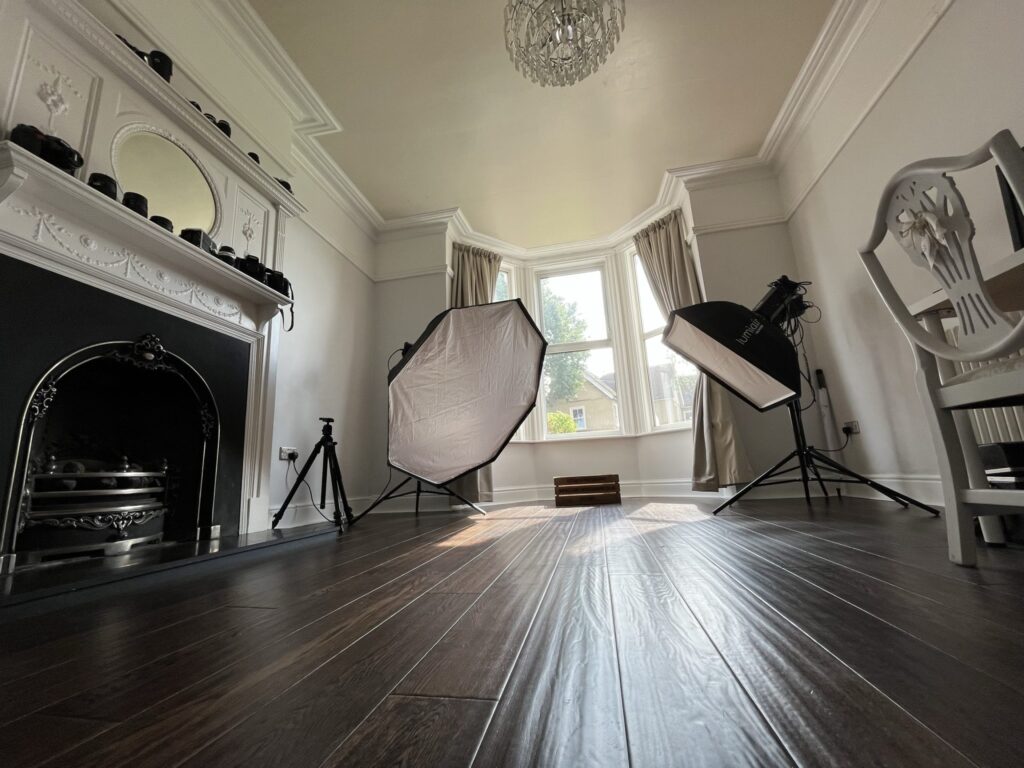
So I started to experiment with Ilford PanF 50 Plus in my now fairly new studio setup at the end of 2021 using my Hasselblad (so I am referring to 120 format of course).
The first subject (or victim!) was my dog! I was not expecting great things as I was still learning the finer details of studio lighting work, but once I developed the rolls from that mini-shoot, I nearly fell off my chair with surprise. The negatives were like little sheets of glass, with perfectly exposed frames, and very solid looking contrast between dark and bright – just as I had been looking for. On digitisation of the negatives, I was delighted with the results and concluded I was either an amazingly gifted studio photographer, or that studio photography was not as hard as I had first assumed given a basic understanding of studio strobes! I concluded the latter, of course!
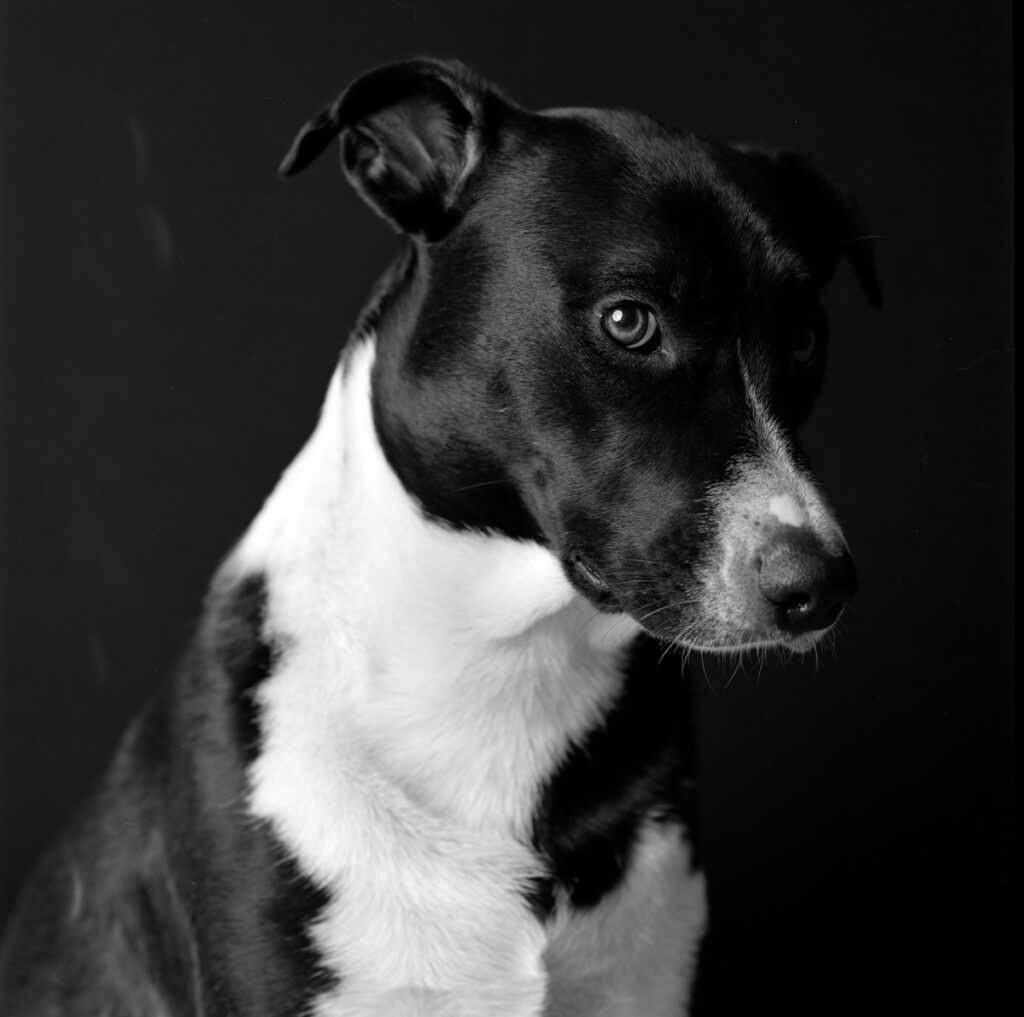
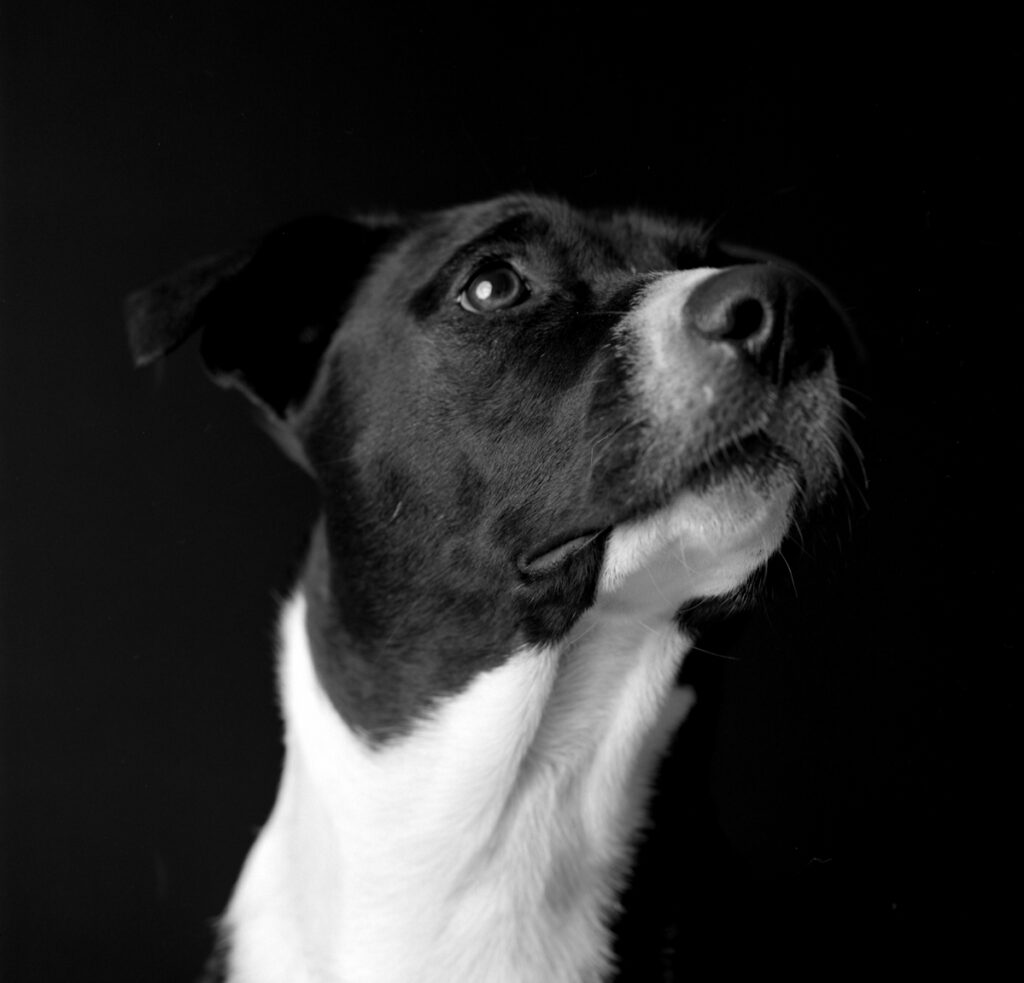
A few more experiments with some friends of ours, and of course my own family (most notably my kids) followed
and soon after I had a try with a mother and baby shoot as part of marketing campaign – all the black and white shots were captured using Ilford PanF 50 Plus, with the colour shots captured using our traditional portraiture staple; Kodak Portra 400. Once again, the results from the Ilford PanF 50 were outstanding by my judgement.
By now I had concluded that although Ilford PanF 50 is a fine grain slow film that requires a lot of light, I discovered that it excels in a lot of balanced light, which one can achieve with studio lighting, especially with softboxes. So it struck me as the perfect film for studio portraiture. That is not to say, of course, that other films like Kodak Tri-X 400, the reintroduced Fuji Acros vII or other Ilford films are not equally perfect. They are, but they are also twice the cost of Ilford PanF 50 Plus (at least the Kodak and Fujifilm choices are) and the other Ilford films I used didn’t quite seem to match PanF 50 for me, though in fairness, I did not experiment that much – when I find something I like, I stick with it!
So a few months later I used it again with another mother and her new baby, along with the babies Dad. This was an interesting session because men are photographed less commonly in these scenarios from my experience. But this particular Dad was all too happy to captured with his new baby. It was also an added bonus that he was a very tall and handsome chap so I tried my hand at creating imagery that I often recalled from the 1990s when “Athena” was a goto place for posters – this was the era of the print, of course, prior to digital display of everything. There was a famous photograph of a male model with a baby that was made into a poster and bought in its millions the world over. Well, I tried my hand at creating something similar and the results were very pleasing to me, as they were to the mum and dad of this shoot.
Moving forward, I hope for the chance to shoot more of Ilford PanF 50 in the studio like this as I now feel I have developed a fairly dependable workflow. There are not many photographers that I know of who use Ilford PanF 50 frequently for professional work, aside from the well known model photographer, MrLeica.com and also Craig Fleming who, quite famously, uses Ilford lines to photograph celebrities and for which Ilford has produced a dedicated film of his work on YouTube. So I am hoping to be one of those who does use it almost exclusively. If you are one of the photographers who uses it for studio work too, please do comment below so I can follow your activity and see your results.
Lastly, here is the studio rigged up from a recent shoot, kind of “it in action”, so to speak.
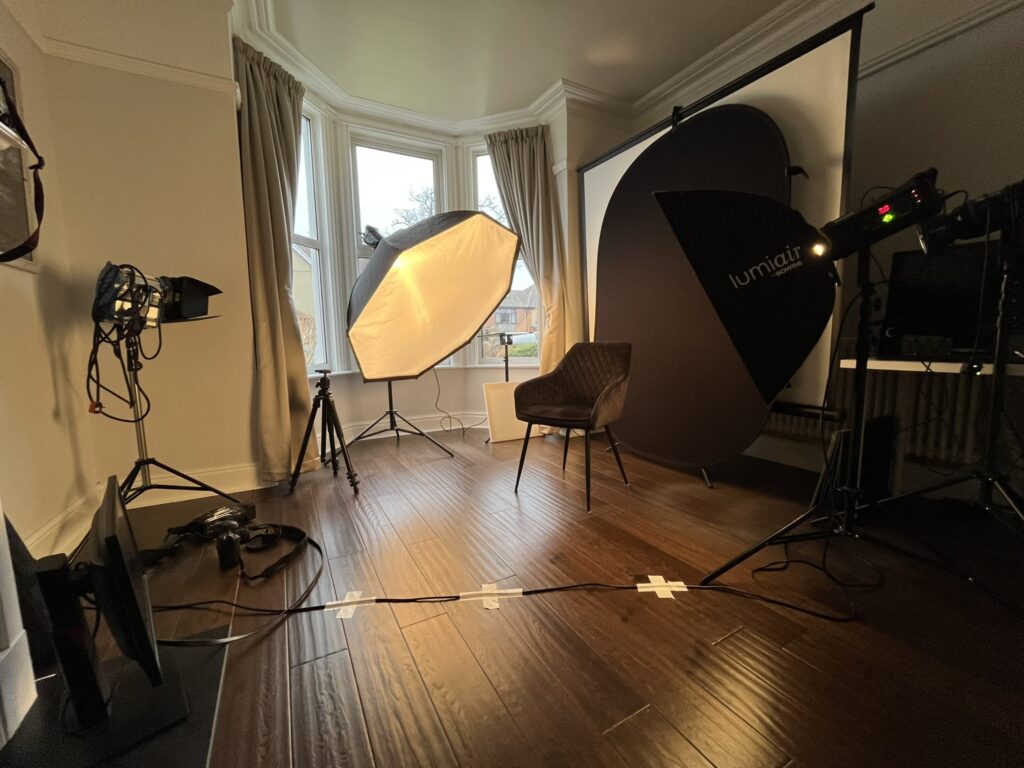
Ted
Share this post:
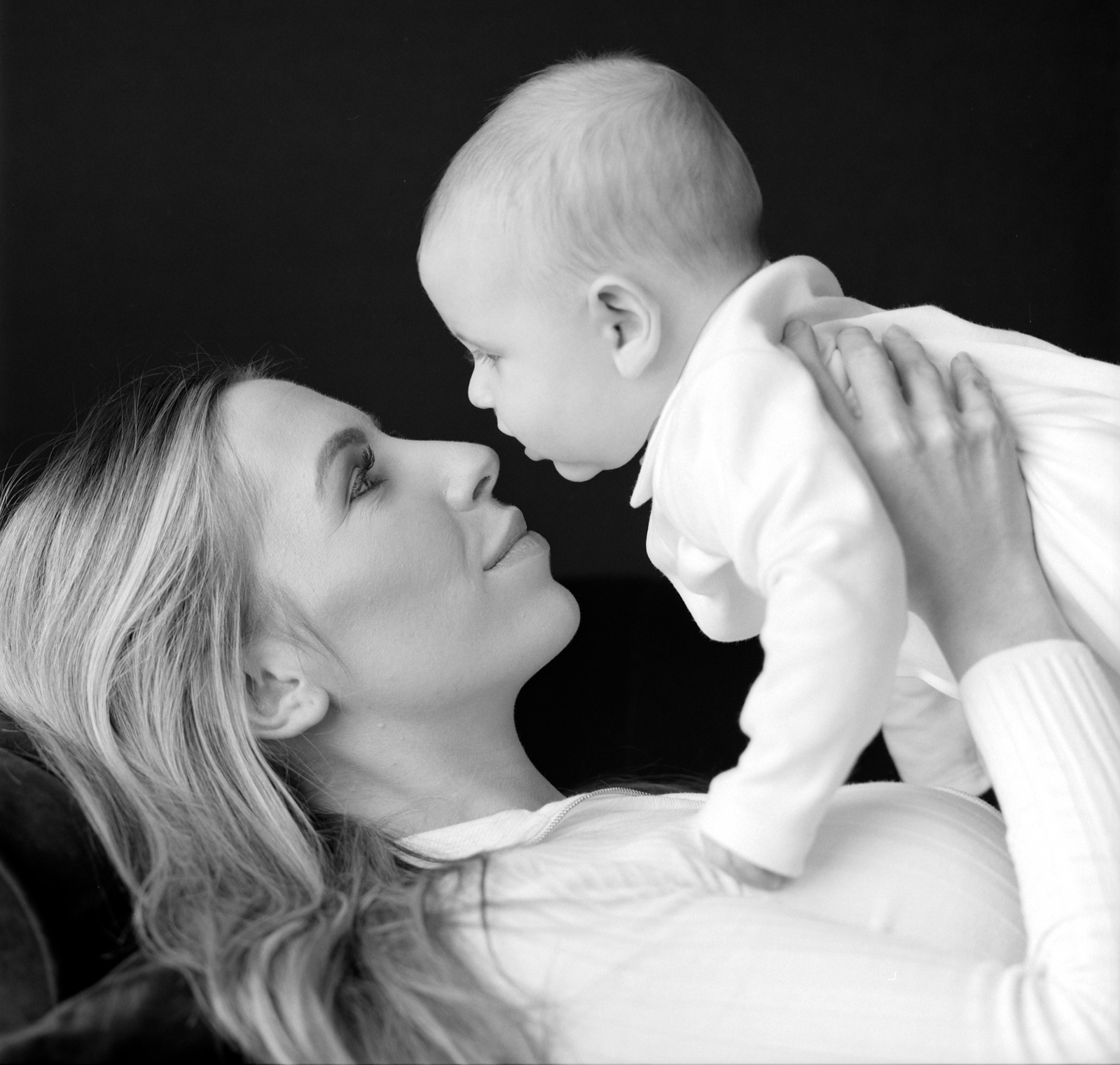
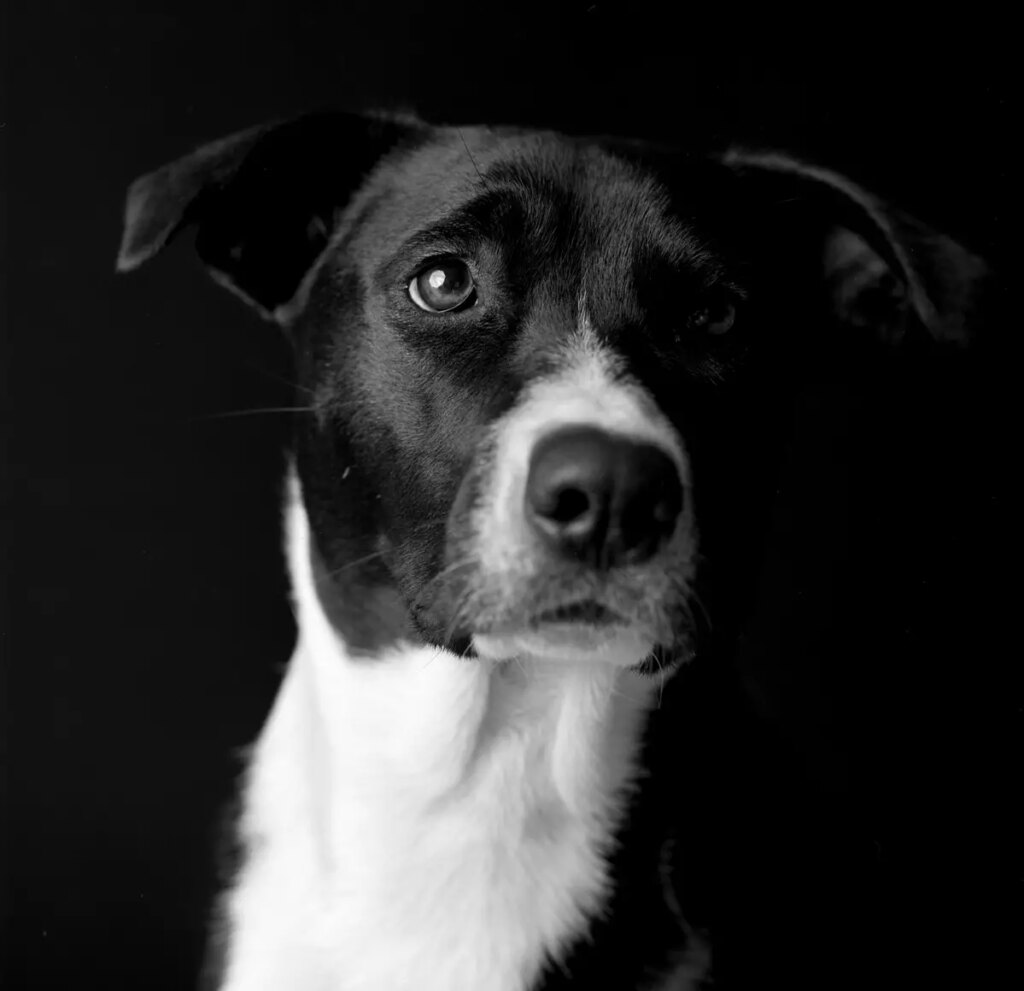
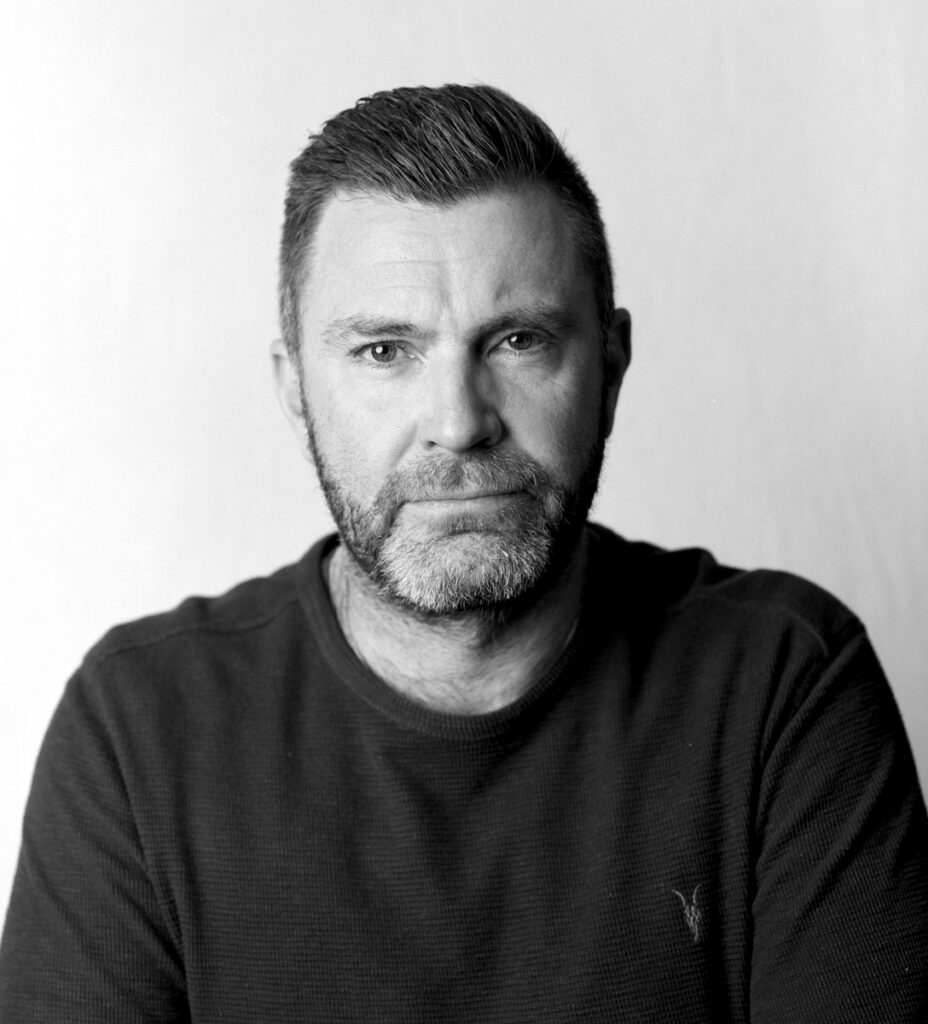
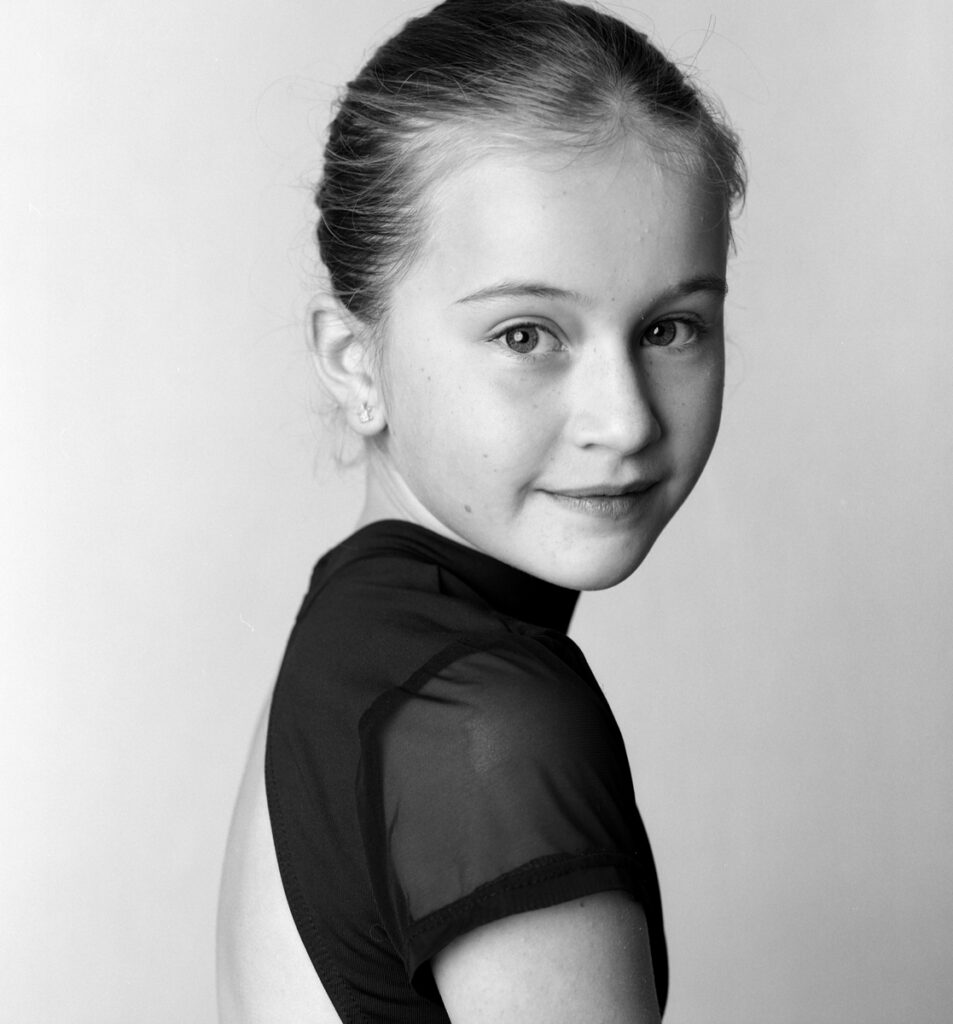
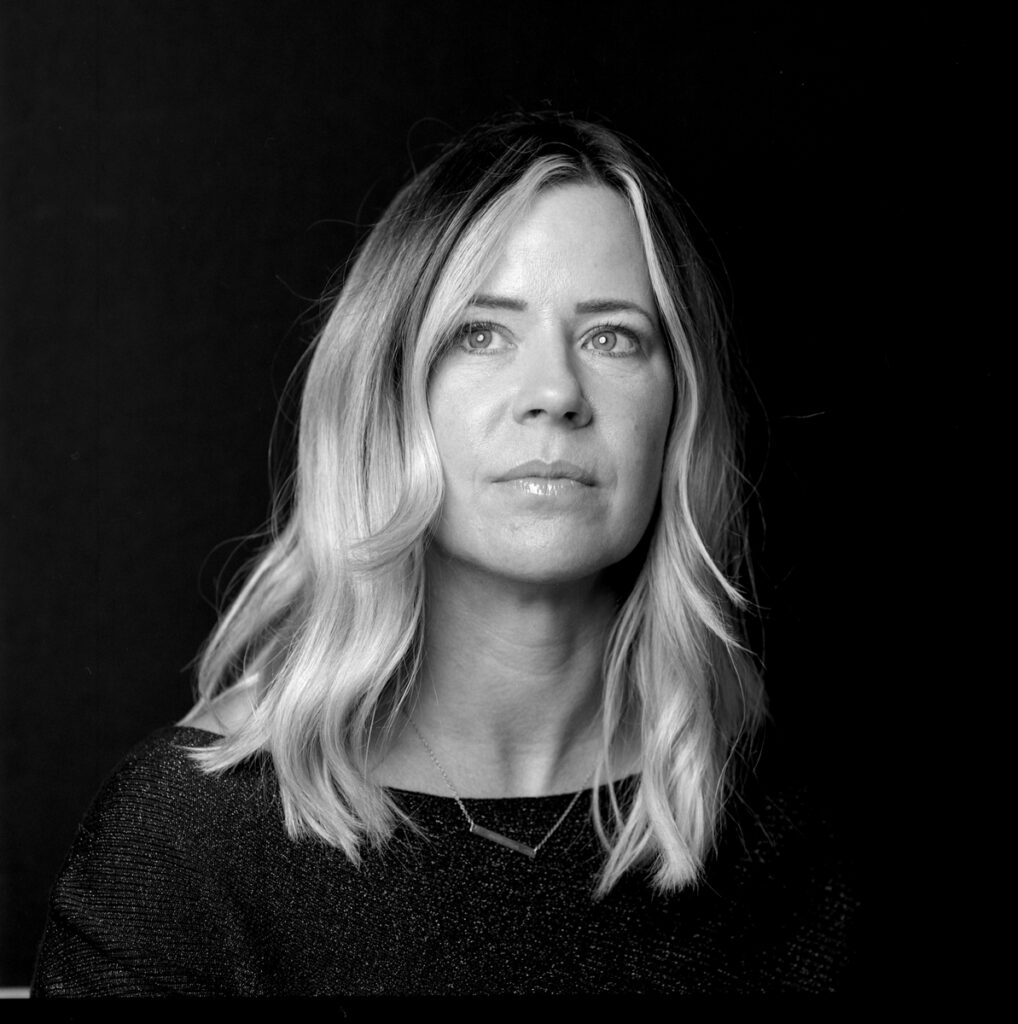
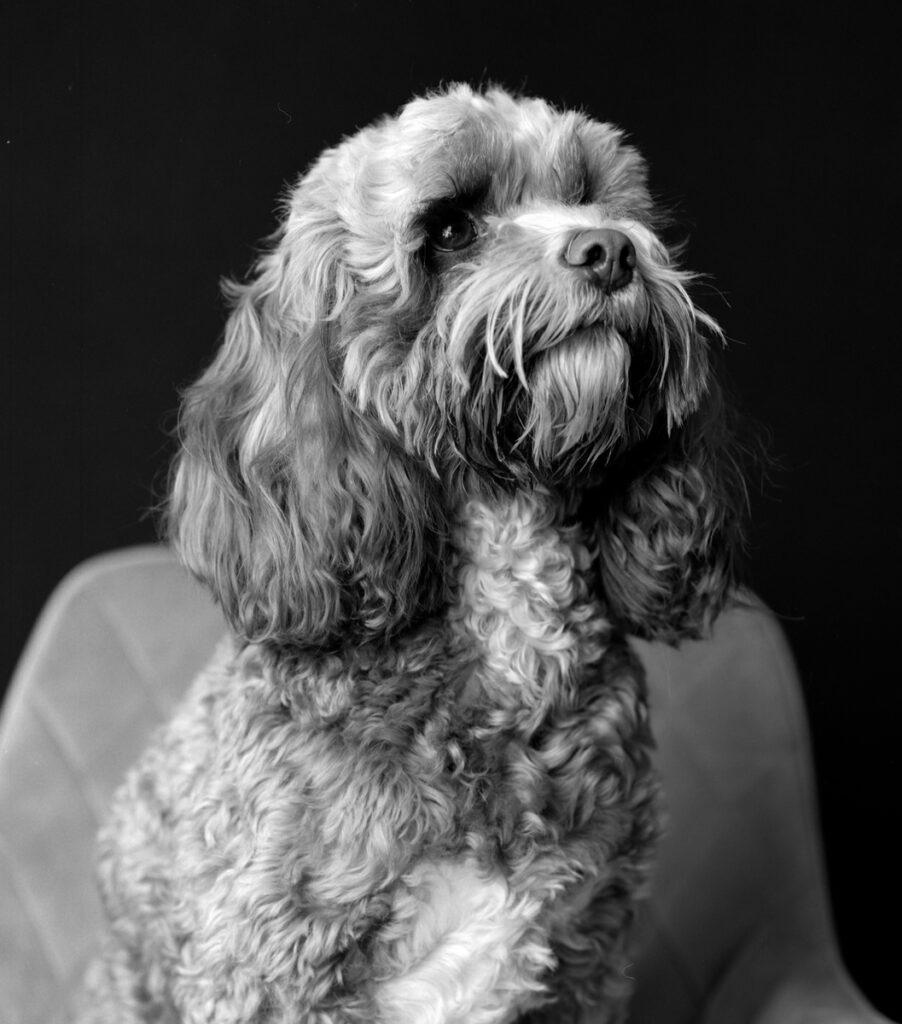
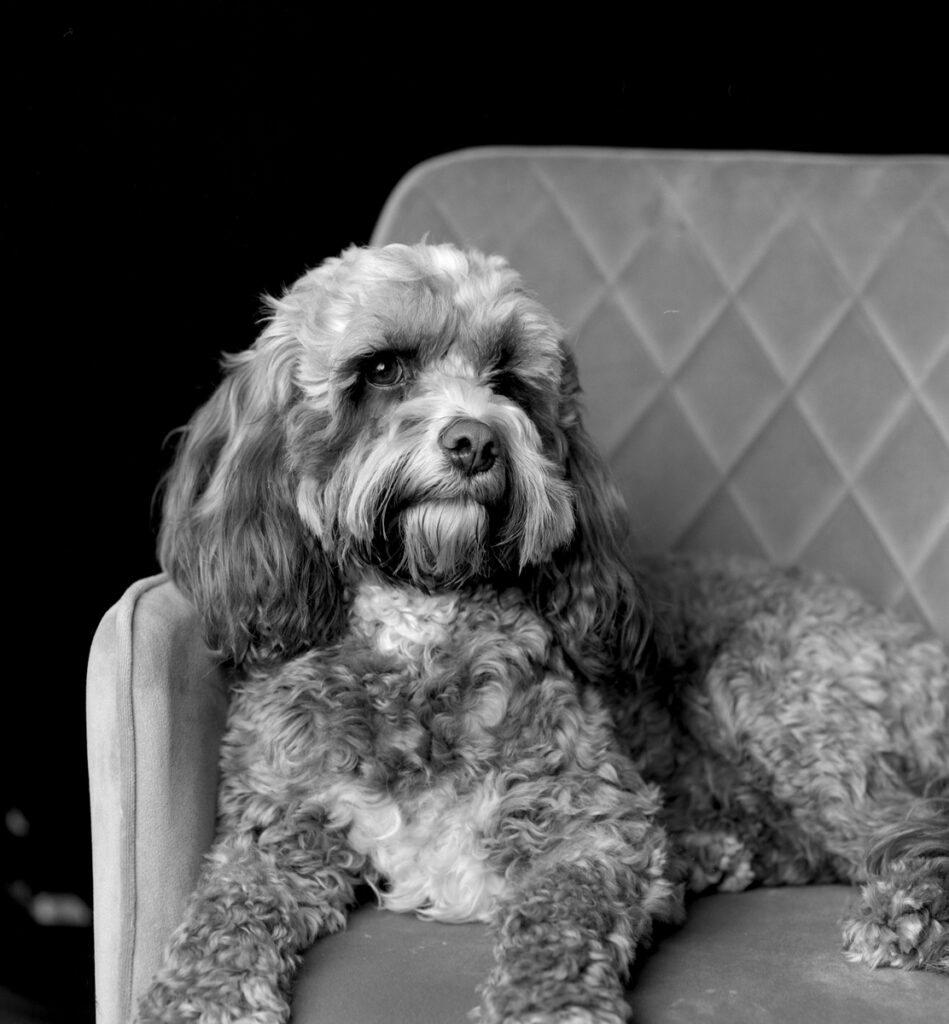
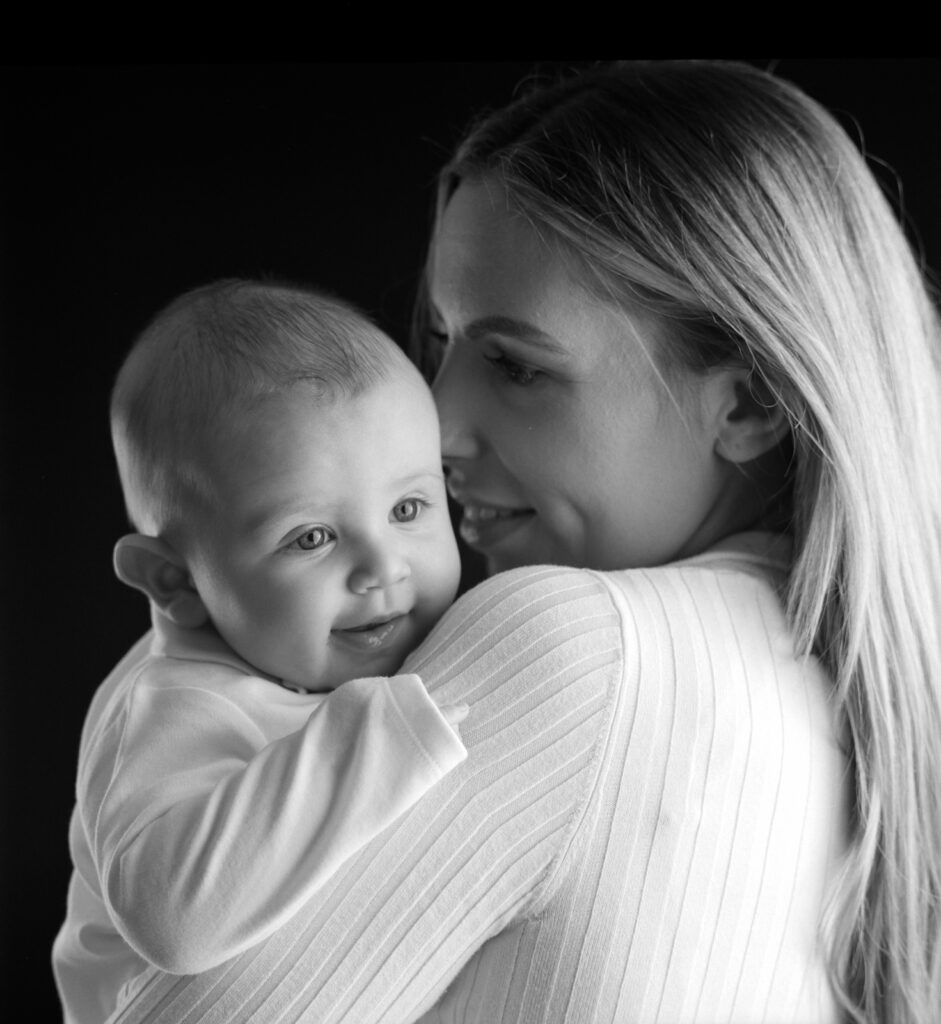
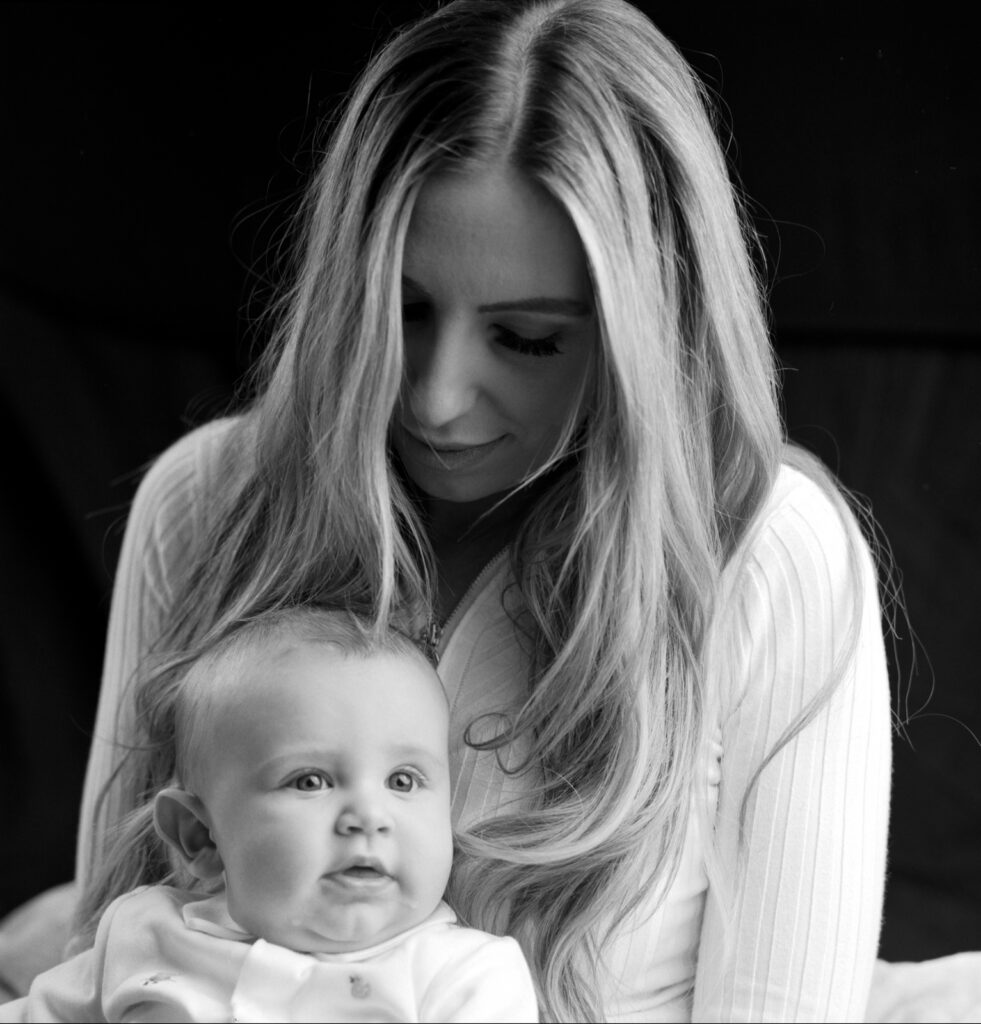
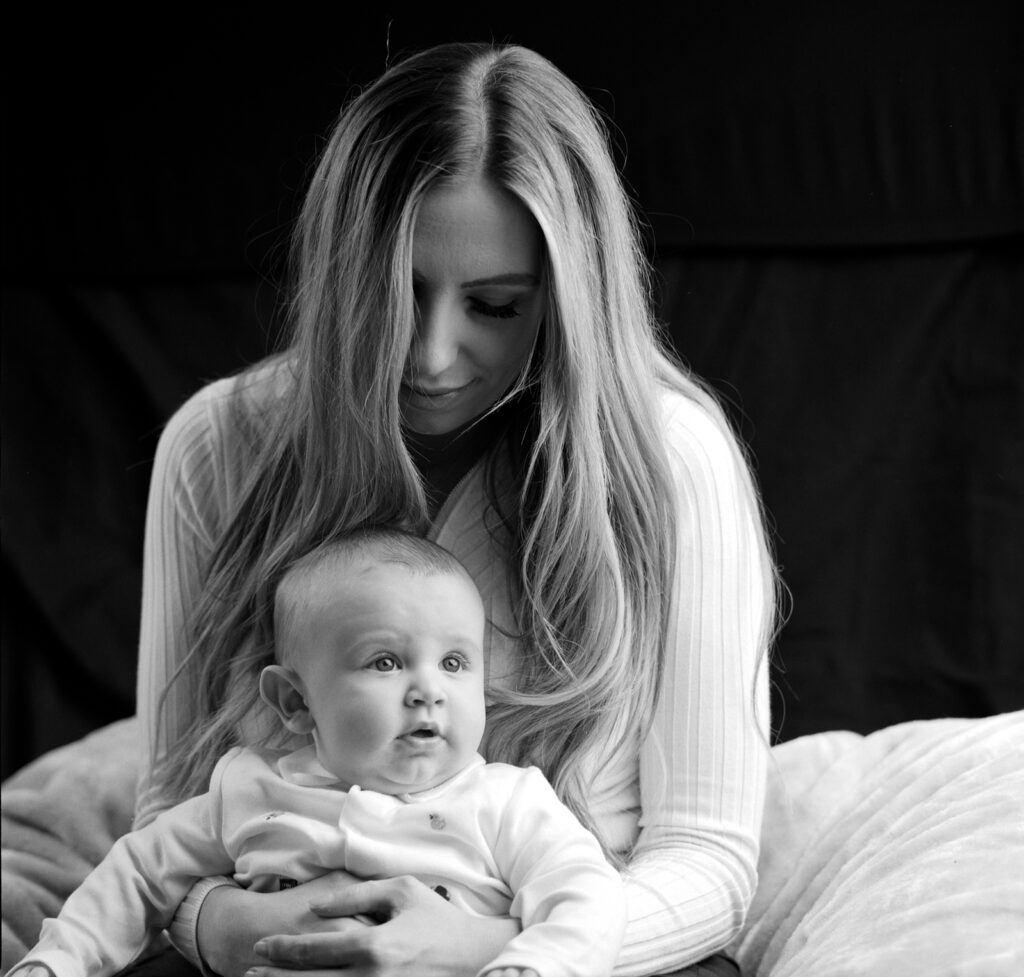
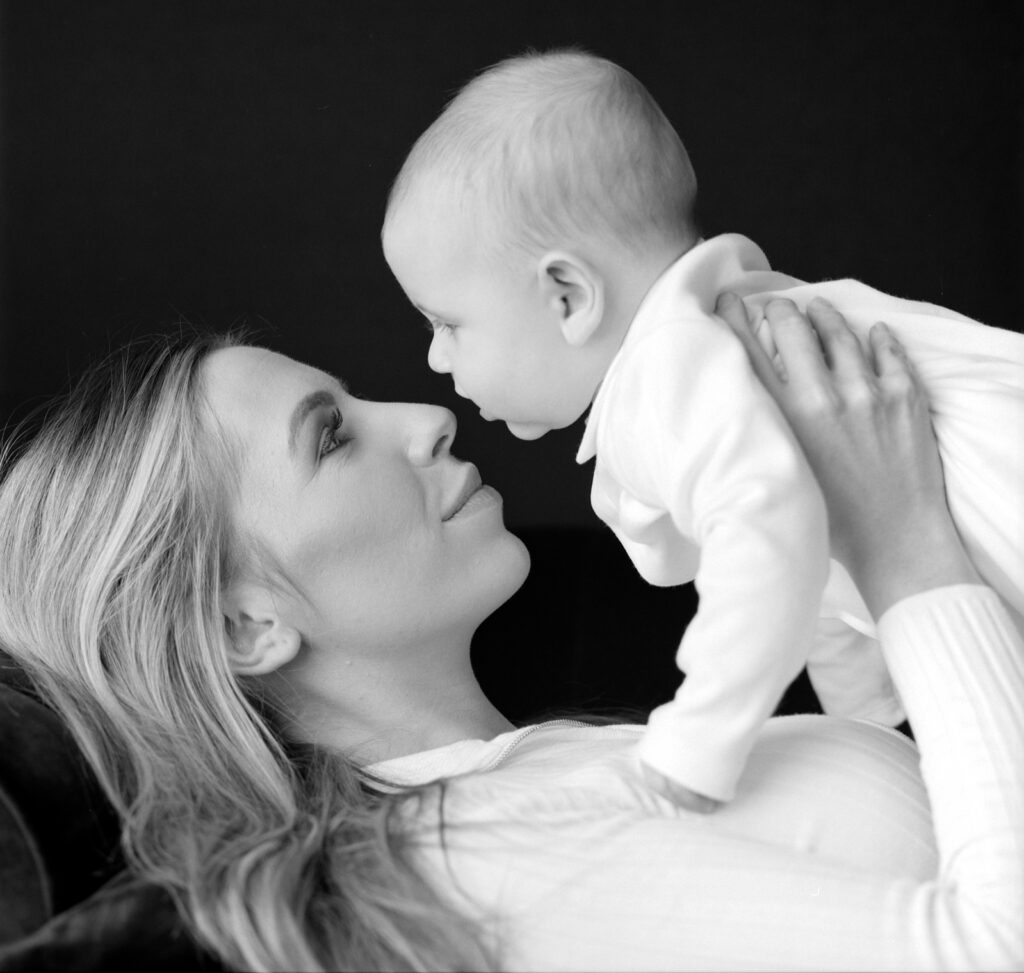
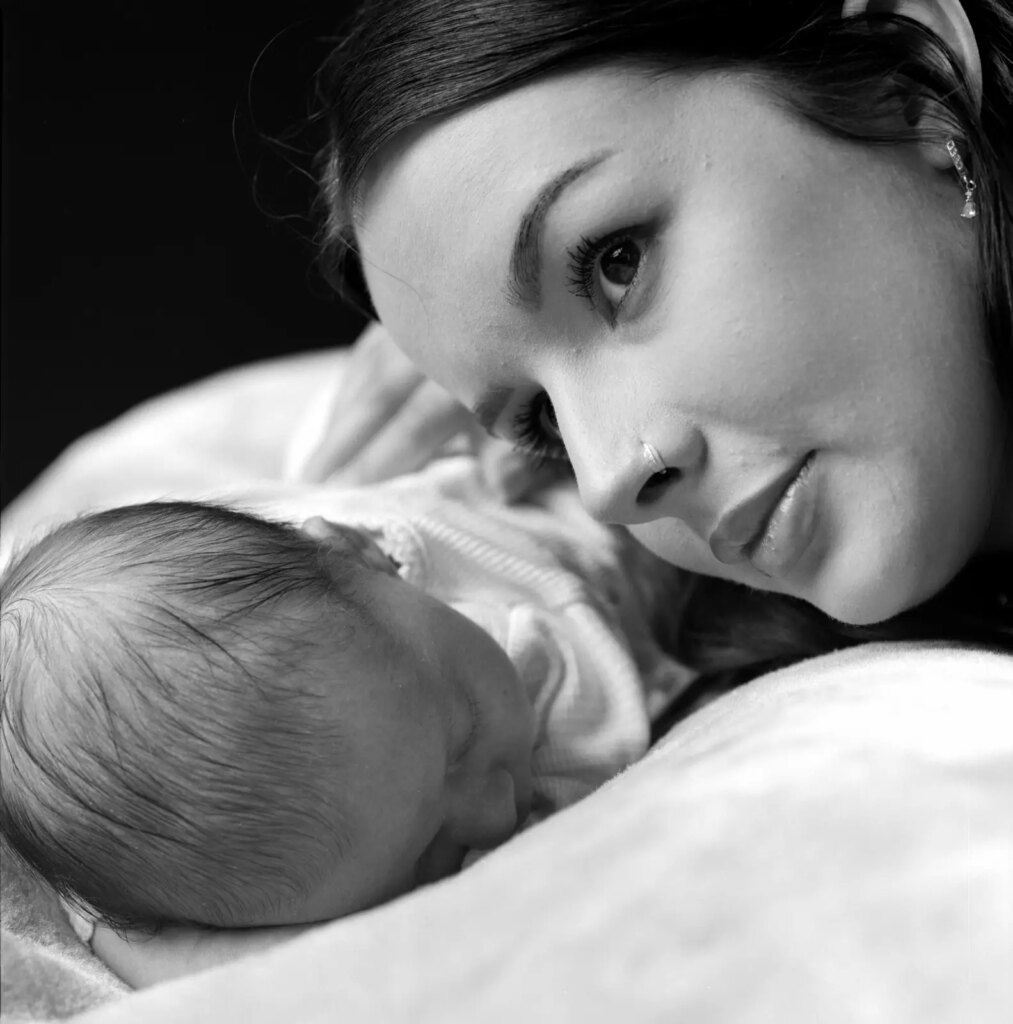
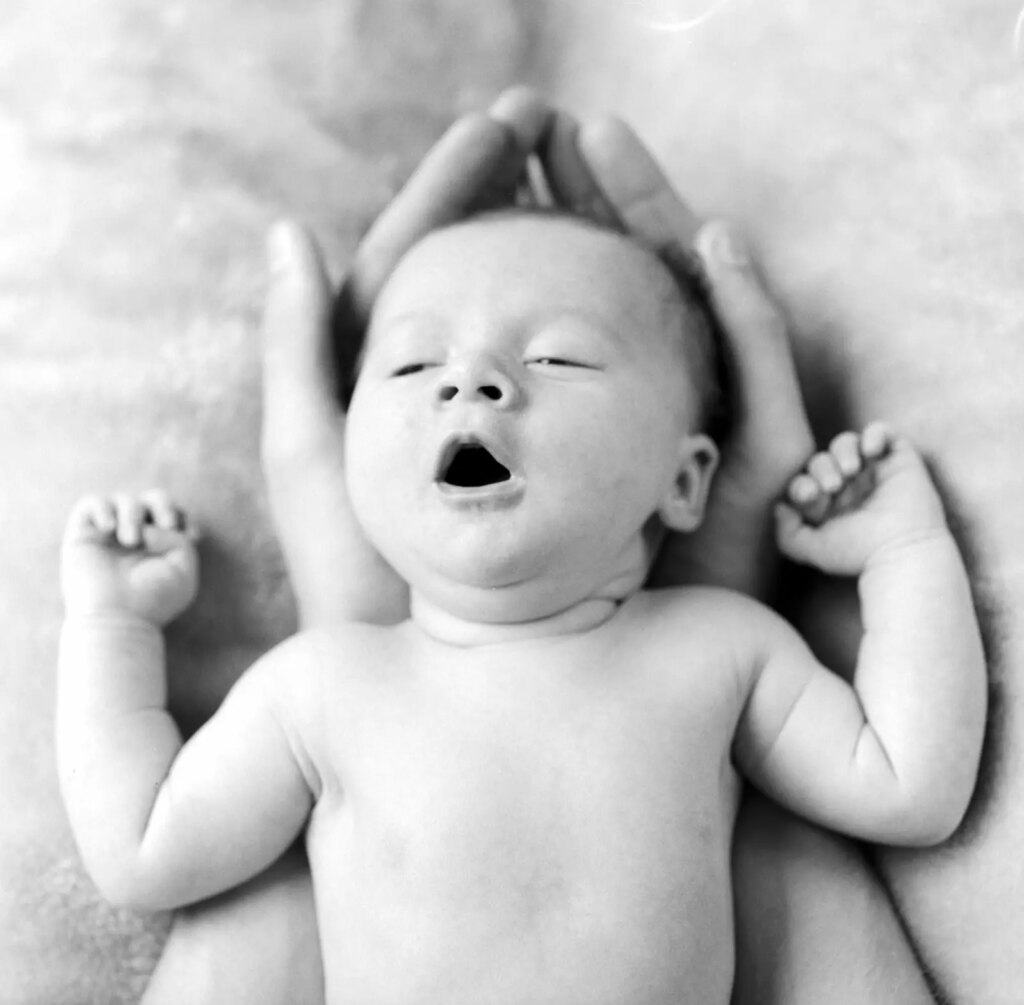
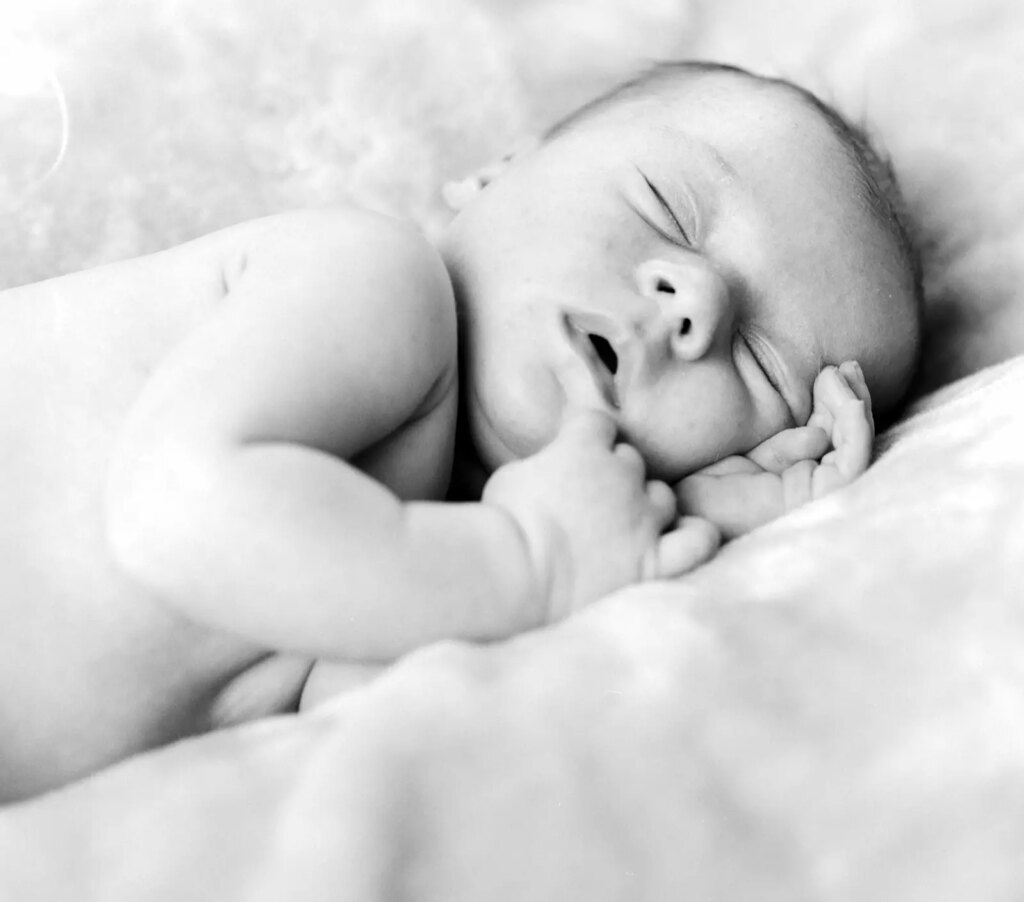
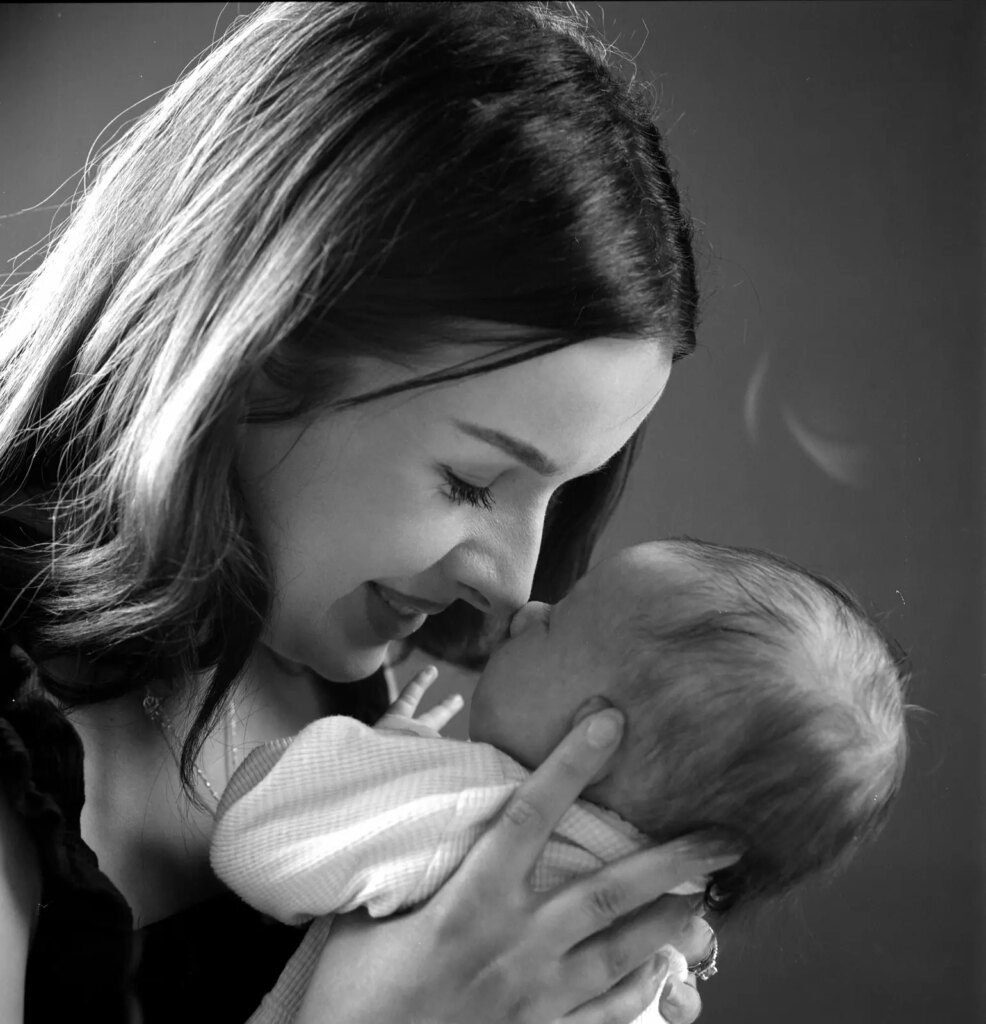
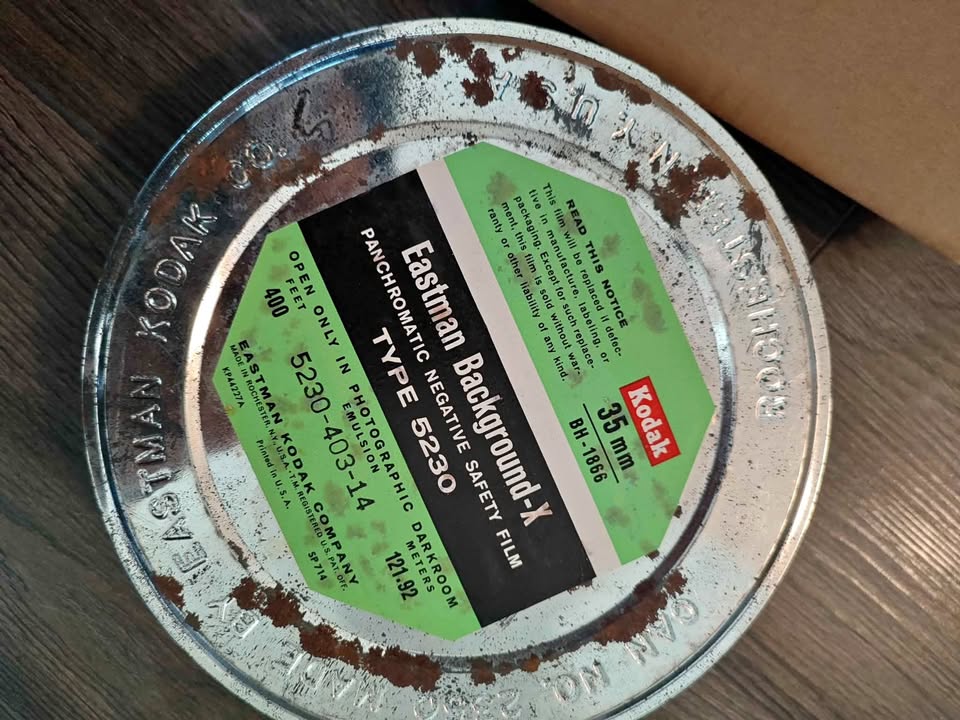
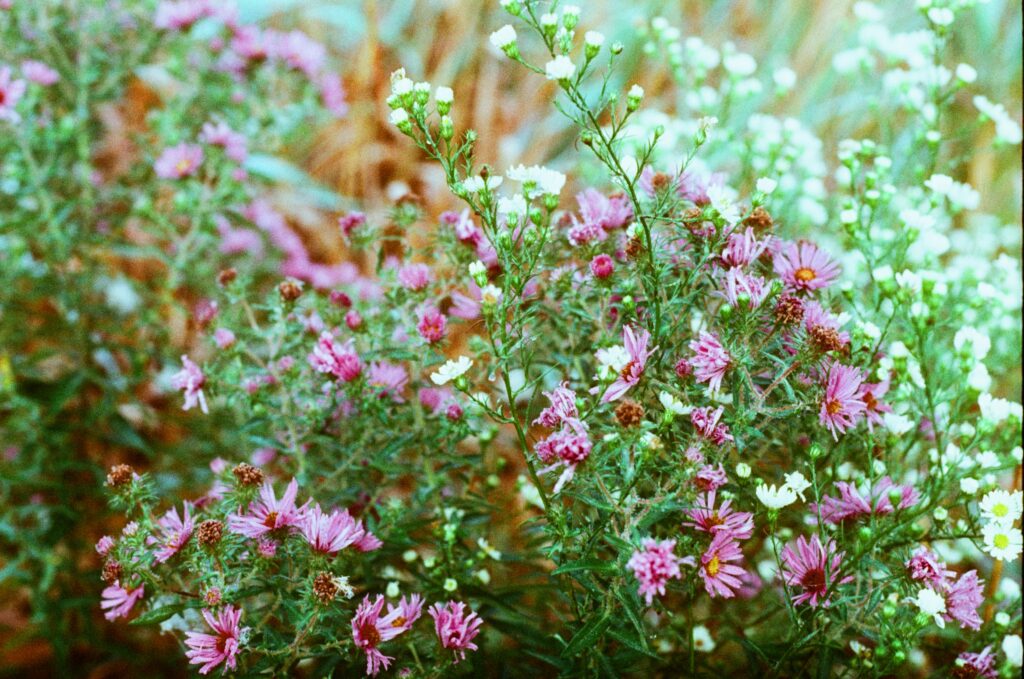
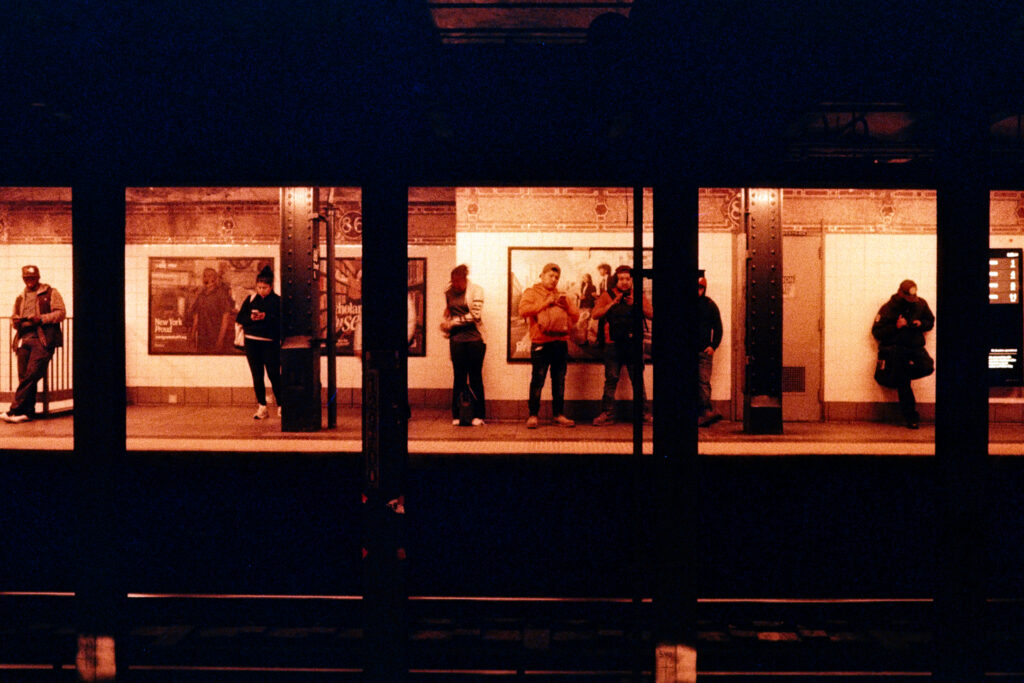
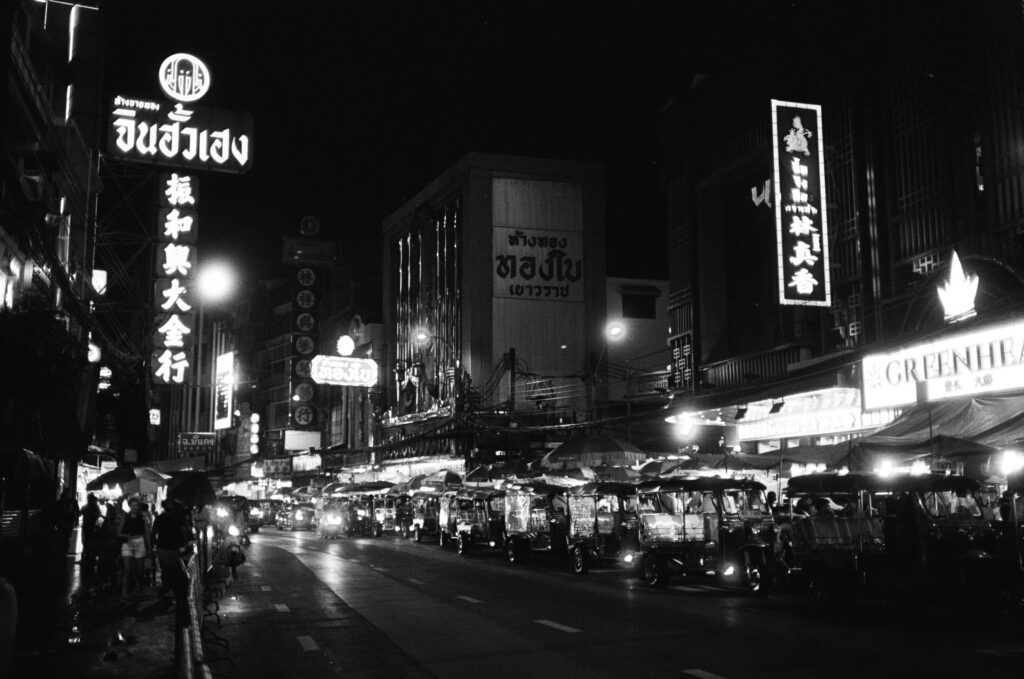




Comments
Ibraar Hussain on Ilford PanF 50 Plus in the Photography Studio
Comment posted: 07/02/2024
Pan F is a very nice film - I used to use it in a Fuji GA645 - giving lovely tones detail and superb resolution
I then used a 25 ISO film - I think it was Agfa APX25 - that was even nicer!
Comment posted: 07/02/2024
Simon Forster on Ilford PanF 50 Plus in the Photography Studio
Comment posted: 07/02/2024
Comment posted: 07/02/2024
Geoff Chaplin on Ilford PanF 50 Plus in the Photography Studio
Comment posted: 07/02/2024
Comment posted: 07/02/2024
Philip Lambert on Ilford PanF 50 Plus in the Photography Studio
Comment posted: 07/02/2024
Phil
Comment posted: 07/02/2024
Gary Smith on Ilford PanF 50 Plus in the Photography Studio
Comment posted: 07/02/2024
Comment posted: 07/02/2024
Comment posted: 07/02/2024
Comment posted: 07/02/2024
Julian Tanase on Ilford PanF 50 Plus in the Photography Studio
Comment posted: 08/02/2024
Thank you for showing these, indeed a joy !
Comment posted: 08/02/2024
Paul Quellin on Ilford PanF 50 Plus in the Photography Studio
Comment posted: 08/02/2024
Comment posted: 08/02/2024
Alex on Ilford PanF 50 Plus in the Photography Studio
Comment posted: 10/02/2024
Comment posted: 10/02/2024
Andy Smart on Ilford PanF 50 Plus in the Photography Studio
Comment posted: 12/02/2024
Bill Brown on Ilford PanF 50 Plus in the Photography Studio
Comment posted: 15/03/2024
Comment posted: 15/03/2024
Comment posted: 15/03/2024
Eddie on Ilford PanF 50 Plus in the Photography Studio
Comment posted: 03/08/2025